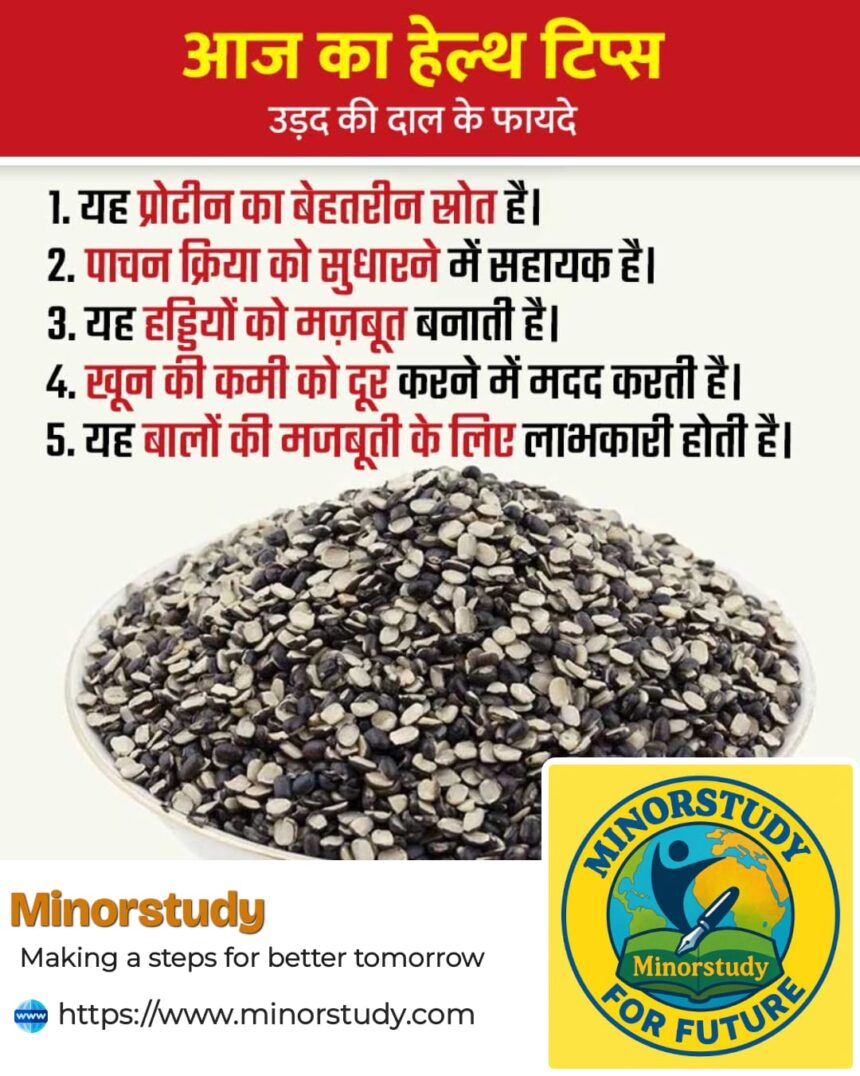🥣 Introduction: A Superfood Hiding in Your Kitchen
In the fast-paced age of superfoods, Urad Dal (Black Gram) doesn’t get the spotlight it truly deserves. While quinoa and chia seeds are lauded as modern health wonders, our traditional kitchens have long held a secret powerhouse: Urad Dal.
- 🕰️ History of Urad Dal: A Timeless Culinary and Medicinal Star
- 📅 Timeline: Urad Dal Through the Ages
- ✅ 9 Transformative Health Benefits of Urad Dal
- 1. 💪 Boosts Muscle Mass and Strength
- 2. 🩸 Enhances Iron Levels – Combats Anemia
- 3. 🧠 Improves Brain Function
- 4. 💩 Aids in Digestion & Prevents Constipation
- 5. 🧬 Supports Heart Health
- 6. ⚡ Regulates Blood Sugar – Diabetic Friendly
- 7. 🦴 Strengthens Bones and Joints
- 8. 🌟 Rejuvenates Skin and Hair
- 9. 🧘 Enhances Energy and Reduces Fatigue
- 📊 Fun and Surprising Facts
- 🙋♂️ Frequently Asked Questions (FAQs)
- Q1: Is urad dal good for daily consumption?
- Q2: Can urad dal be eaten during pregnancy?
- Q3: Does it cause gas or bloating?
- Q4: Is it good for weight loss?
- Q5: What are some popular dishes with urad dal?
- 🎉 Observance and Cultural Importance
- 💝 Warm Wishes and Cultural Sentiment
- 🌱 Urad Dal in Daily Life & Society
- 📌 Important Points Recap
- 🧠 Conclusion: From Tradition to Transformation
Used in Indian households for centuries in dishes like dosa, idli, dal makhani, papad, and even Ayurvedic remedies, urad dal is a treasure trove of protein, iron, fiber, calcium, and more. Whether you’re a fitness enthusiast, someone battling fatigue, or just looking to eat healthier, this humble pulse can do wonders for your life.
Let’s explore its deep roots, benefits, and how it plays a vital role in personal and societal wellness.
🕰️ History of Urad Dal: A Timeless Culinary and Medicinal Star
Urad dal, known as Vigna mungo, is native to the Indian subcontinent, with records of its cultivation dating back over 4500 years, during the Indus Valley Civilization.
Ancient Ayurvedic texts like Charaka Samhita mention urad dal as a “balya” food – something that gives strength.
It was valued in traditional South Indian medicine (Siddha) for improving vitality and digestion.
Roman traders referred to Indian black lentils as “Indian black beans” and traded them for spices and cotton.
Over the centuries, it became a culinary staple across India, Pakistan, Nepal, and Sri Lanka.
📅 Timeline: Urad Dal Through the Ages
| Year/Period | Milestone |
|---|---|
| ~2500 BCE | Cultivated during Indus Valley Civilization |
| ~600 BCE | Mentioned in Ayurvedic medical texts |
| 1st Century | Exported through Indian Ocean trade |
| 12th Century | Used in temple food in South India |
| Modern Era | Promoted as a vegetarian protein source worldwide |
✅ 9 Transformative Health Benefits of Urad Dal
Let’s dive into the power-packed advantages of adding urad dal to your regular diet.
1. 💪 Boosts Muscle Mass and Strength
High in protein, especially important for vegetarians. It supports muscle development, cell repair, and overall stamina.
2. 🩸 Enhances Iron Levels – Combats Anemia
Rich in iron, urad dal is beneficial for individuals with low hemoglobin, especially women and adolescents.
3. 🧠 Improves Brain Function
Loaded with magnesium and folic acid, it supports brain health and reduces the risk of neurodegenerative diseases.
4. 💩 Aids in Digestion & Prevents Constipation
The high dietary fiber content stimulates bowel movement, cleanses the colon, and promotes gut health.
5. 🧬 Supports Heart Health
Urad dal contains potassium, which helps regulate blood pressure, and magnesium, known for maintaining heart rhythm.
6. ⚡ Regulates Blood Sugar – Diabetic Friendly
With a low glycemic index, urad dal is excellent for diabetics. It prevents sudden sugar spikes and provides lasting energy.
7. 🦴 Strengthens Bones and Joints
Calcium, phosphorus, and magnesium in urad dal contribute to strong bones and reduce risks of osteoporosis.
8. 🌟 Rejuvenates Skin and Hair
Black gram is packed with zinc and B-complex vitamins that keep your skin radiant and hair lustrous.
9. 🧘 Enhances Energy and Reduces Fatigue
Its iron content boosts oxygen transport, fighting chronic fatigue and improving vitality and sexual health.
📊 Fun and Surprising Facts
A 100g serving of urad dal has 25g of protein—comparable to meat!
It’s a major component of Ayurvedic medicated ghee for post-pregnancy recovery.
In South India, urad dal is used in festive temple offerings and ritual cooking.
The famous Punjabi “Dal Makhani” wouldn’t exist without it!
🙋♂️ Frequently Asked Questions (FAQs)
Q1: Is urad dal good for daily consumption?
Yes! When consumed moderately (3–4 times a week), it supports balanced nutrition.
Q2: Can urad dal be eaten during pregnancy?
Absolutely. It’s high in iron, folic acid, and calcium, supporting fetal growth.
Q3: Does it cause gas or bloating?
Only when over-consumed or improperly cooked. Soak overnight and use digestive spices like hing (asafoetida) to reduce gas.
Q4: Is it good for weight loss?
Yes. High in protein and fiber, it keeps you full longer and reduces unhealthy snacking.
Q5: What are some popular dishes with urad dal?
Dal Makhani
Idli and Dosa Batter
Vadas (Medu Vada)
Papad (appalam)
Khichdi
🎉 Observance and Cultural Importance
Urad dal isn’t just food—it’s a ritual, a tradition, and a celebration.
Used during Pongal, Diwali, Onam, and various temple offerings.
In Tamil Nadu, urad dal is considered auspicious and is offered to deities.
Ayurvedic practitioners prescribe it during post-natal recovery and to enhance masculine vigor.
💝 Warm Wishes and Cultural Sentiment
“May your meals be as nourishing as your dreams, and may the age-old strength of urad dal bless your life with energy, endurance, and wellness.”
From our grandmothers to modern dieticians, everyone agrees—nature’s best medicines are often the most humble.
🌱 Urad Dal in Daily Life & Society
For Individuals:
Affordable source of protein for vegetarians
Essential in child growth, postpartum recovery, and elderly nutrition
Prevents lifestyle diseases like obesity, diabetes, and anemia
For Society:
Boosts local agriculture and farmers’ income
Forms the base of Mid-Day Meals and public health nutrition
Helps reduce dependency on imported proteins (like soy or whey)
📌 Important Points Recap
| Key Aspect | Highlight |
|---|---|
| Scientific Name | Vigna mungo |
| Native to | Indian subcontinent |
| Nutrition | High in protein, iron, calcium |
| Best For | Muscle building, anemia, digestion |
| Recipes | Dosa, Dal Makhani, Papad, Vada |
🧠 Conclusion: From Tradition to Transformation
In a world of synthetic supplements and trendy diets, Urad Dal stands tall as a naturally wholesome, affordable, and transformative food. It’s more than just a pulse—it’s a symbol of ancestral wisdom, a source of wellness, and a gift from nature.
Whether you’re looking to boost your energy, improve digestion, or build strength, urad dal deserves a prime spot in your kitchen and your plate. Let’s not let this underrated superfood fade into the background.
Add a spoonful of strength to your day—with urad dal! 💪








